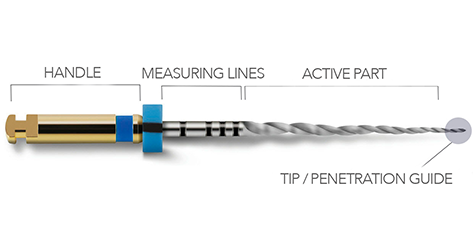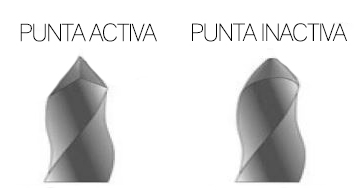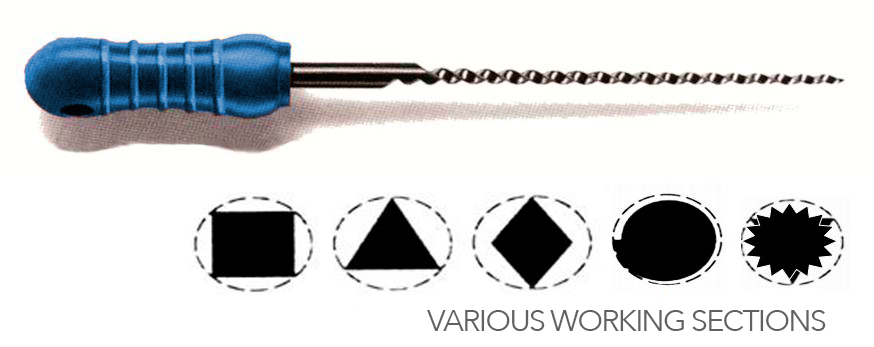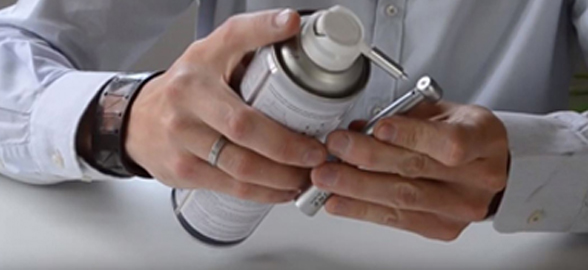Within the world of endodontic instruments lays the endodontic files used for root canal procedures. As time goes, technology advances and keeps producing better files designed to treat each clinical case with the greatest amount of precision and comfort.
Without a doubt, the biggest question from dentists regarding these instruments is which system of files would be the most complete, however there is really no perfect answer to this.
Depending on the clinical case, one file or another will need to be used, however, this also depends a lot on the endodontist's methodology, as some are more conservative than others. In fact, many endodontists alternate and combine files. However, K files do remain the most commonly used and practical ones as opposed to mechanized files that are more expensive and brittle in the distal segments.
At Dentaltix we want to remind you of the most important parameters to consider when picking endodontic files:

- Classification. Endodontic instruments can be divided into 4 different groups:
- GROUP 1. Instrumentation used for manual root canal procedure.
- GROUP 2. Instrumentation for mechanized or rotary duct procedure.
- GROUP 3. Trephines for mechanized use (Weight burs, Gates glidden, etc.).
- GROUP 4.Instruments and materials for sealing the duct (paper cones, capacitors, etc.).
- Number of instruments in each system. Depending on the manufacturer, some files will have more intermediates and different contours.
- ISO classification. Not all files qualify for this classification. For them to be part of it, they must have the following characteristics:
- The calibre of the file is numbered 10 to 100, with jumps of five units to size 60 and jumps of ten units to size 100.
- The cutting edges will start at the tip of the instrument with the so-called diameter 0 (D0) extending exactly 16 millimeters to the stem, ending at diameter 16 (D16).
- The diameter of D16 will be 32/100 or .32 mm larger than that of D0
- These measurements ensure a constant increase in taper of 0.02 mm per instrument regardless of size..
- The angle at the tip should be 75° ± 15°.
- Numbers 6 and 8 have been added more recently for more versatility.
- Type of cut and section.

- Number of uses for each one. It is important to know how many times you can use a file in order to avoid fractures and accidents. Manufacturers recommend discarding the instrument after the first use, however this is rarely the case in practice due to the associated costs.
- There is no exact rule for calculating the number of uses for each file but in order to anticipate the fracture, the following must be taken into account:
- The condition of the duct to be treated. The more the duct is curved, the more it will force the file.
- The stress to which the file is exposed. The properties of the NiTi material must be known as well as possible. The manufacturers of these instruments recommend a maximum of 8 canals (not teeth) if they are straight and smooth, and to reduce the number of uses as the canals become more difficult, but the file must be carefully observed before proceeding, and if in doubt, discard it at first.
- Thick, strong files are not the same as thin, flexible files. The ideal would be to be able to classify the ducts into easy, medium and difficult but there are many intermediate tones. Of course, in difficult ducts, the files will be replaced before the easy ones, but this rule does not always apply..
In conclusion, each time a file is used, it should be carefully observed. The final decision is made by non other than the dentist.
- Active or inactive tip? Depending on the case, one or the other will be used, although the inactive tip is safer because it is more difficult to drill through the conduit due to the passivity of its cutting force, while the active tip has a higher cutting edge at the cusp.

Having said that, let's get down to business!
MANUAL ENDODONTIC FILES

1. K files. The most commonly used type for canal root procedures. Over time, they have varied from square to triangular and rhomboidal in cross-section, giving rise to the K-Flex and Flex-R files.
- From 1.97 to 0.88 sharp grooves per millimeter.
- 45° helical angle.
- Available in 21, 25 and 31 mm lengths.
- From the 6-gauge to the 140th.
- Twisted instrument.
2. Limas Flexofile. Hybrid instrument derived from K files with triangular section.
- With 60° cutting angle and more grooves.
- Tip inactive, safer and less aggressive.
- From caliber 6 to 140 (21mm and 25mm).
- Twisted instrument.
3. K-Flex files (Kerr).
- Rhombus stem.
- Facilitate the removal of debris by increasing the clearance between the file and the dentin wall.
- Sharp rhombus angles improve cutting efficiency.
- From the 6-gauge to the 80-gauge.
- Twisted instrument.
Click here to see K-flex files
4. Flex-R files. Instrument derived from the K files cordoned off.
- With sharper stretch marks.
- Cutting angle is more negative than in a traditional, curved K-file.
- Roane eliminated the transition angle of the tip, which makes it easier to follow the conduit without producing steps.
- Twisted instrument.
5. K-Colorinox files. They are made of high quality Swedish steel, very thin and stainless. Manufactured by torsion, it gives them a high resistance to fracture, keeping their metal fibres intact. They enlarge the root canal, either abrasively or sharply.
- It has an active cutting tip.
- Available in 21mm, 25mm, 28mm and 30mm in sizes from 06 to 140. and taper .02.
- Quadrangular stem.
Click here to see K-Colorinox files
6. C+ files. Root canal exploration file. Available in 18mm, 21mm and 25mm lengths and 8-15 gauges.
7. C-Pilot files: VDW C-Pilot files are special endodontic files for particularly sinuous and calcified ducts.
- Available in three lengths: 19mm, 21mm and 25mm.
- Tip inactive.
- With intermediate ISO size of 12.5.
- Cross section.
Click here to see C-Pilot files
7. Triple Flex files. Unlike turned files, Triple-Flex is highly resistant to breakage, even under high stress situations. Twisted instrument.
Click here to see Triple Flex files
8. Flexicut files. For the treatment of narrow, highly curved root canals with a filing motion.
- Triangular section and inactive tip.
- Stainless steel.
Click here to see Flexicut files
8. Hedströem files. Drags large amounts of fabric in its traction cut.
- It has a helocoidal shape.
- Turned instrument.
- They cut in one direction only, of retraction, due to the positive inclination of their grooves.
Click here to see Hedströem files
9. UltraFlex, Uniflex and Unifile files. Less known and more specific. Turned instrument. The files of the Unifile system are manufactured by turning.
10. Reamers or reamers (Reamer). It has the characteristic of producing a passive towing system. It will have 0.80 to 0.28 cut-off marks per millimeter on its side. Of triangular cross-sectional configuration.
- Widen the duct evenly and progressively.
- Remove material from the duct.
Click here to see dental stretchers
11. Nervous tyrants. Progressively disused because it is very aggressive, this is only used in cases of very wide ducts.
Click here to see nerve broaches
Not so fast! There are still the rotary files. Click here to know the most important information about them.
DID YOU LIKE THIS ARTICLE? SHARE IT! ;)



